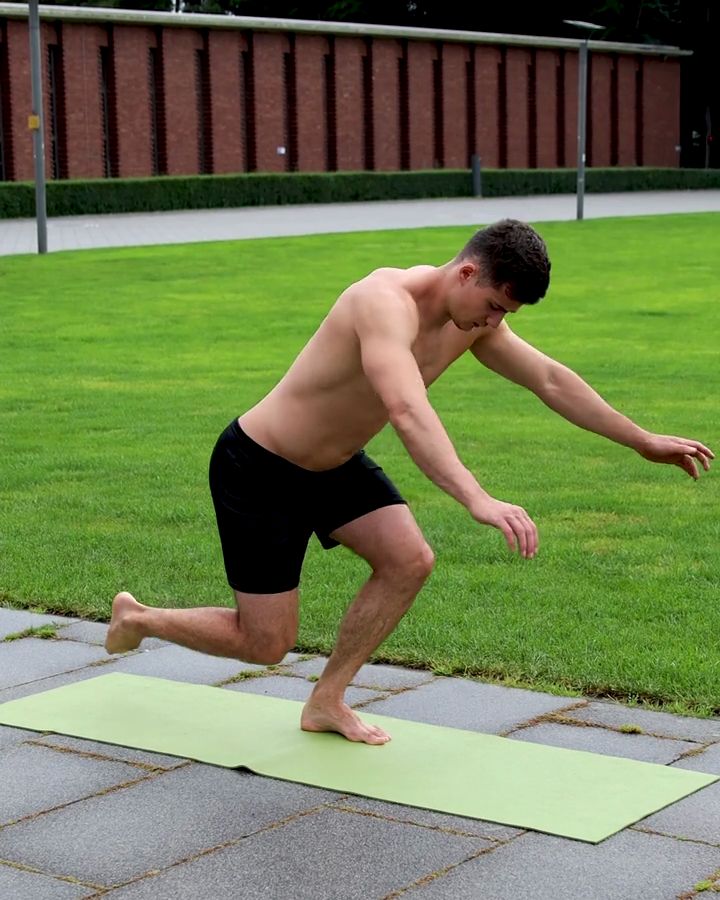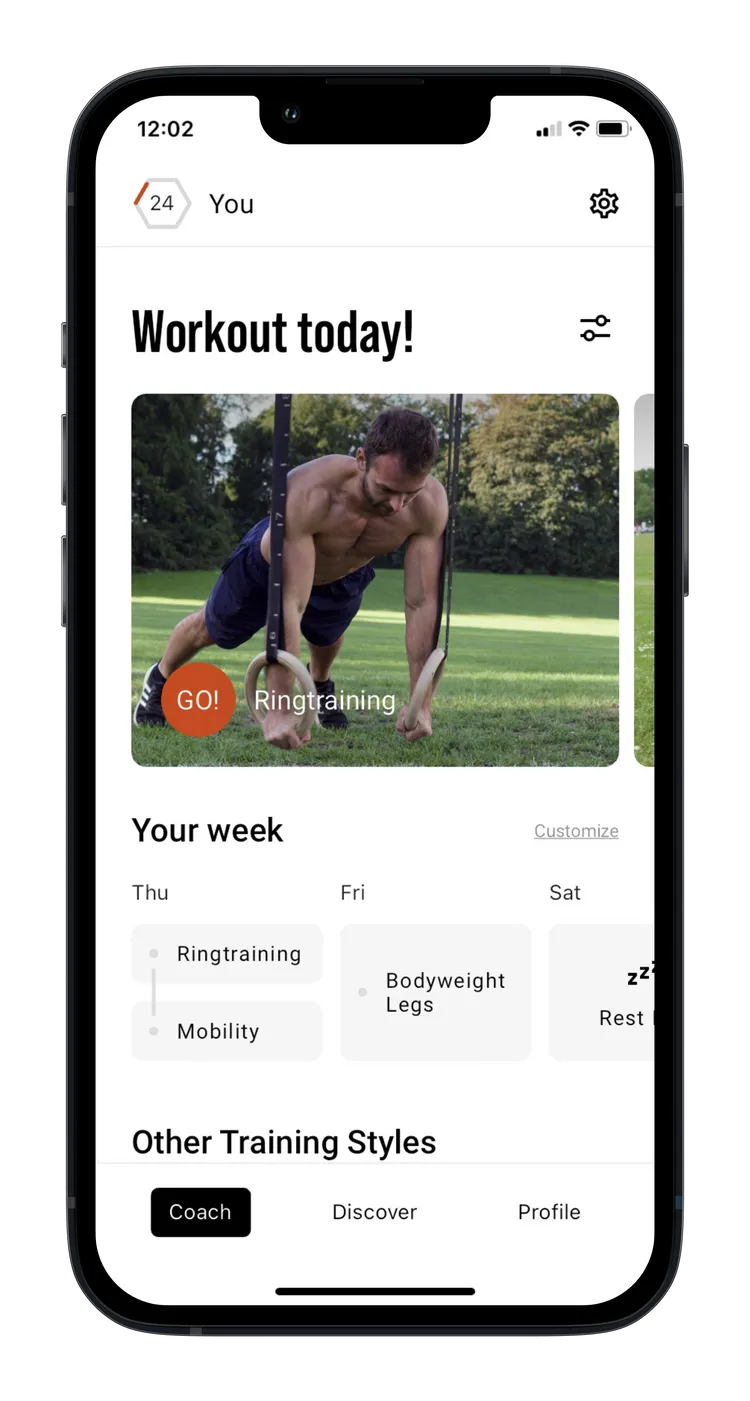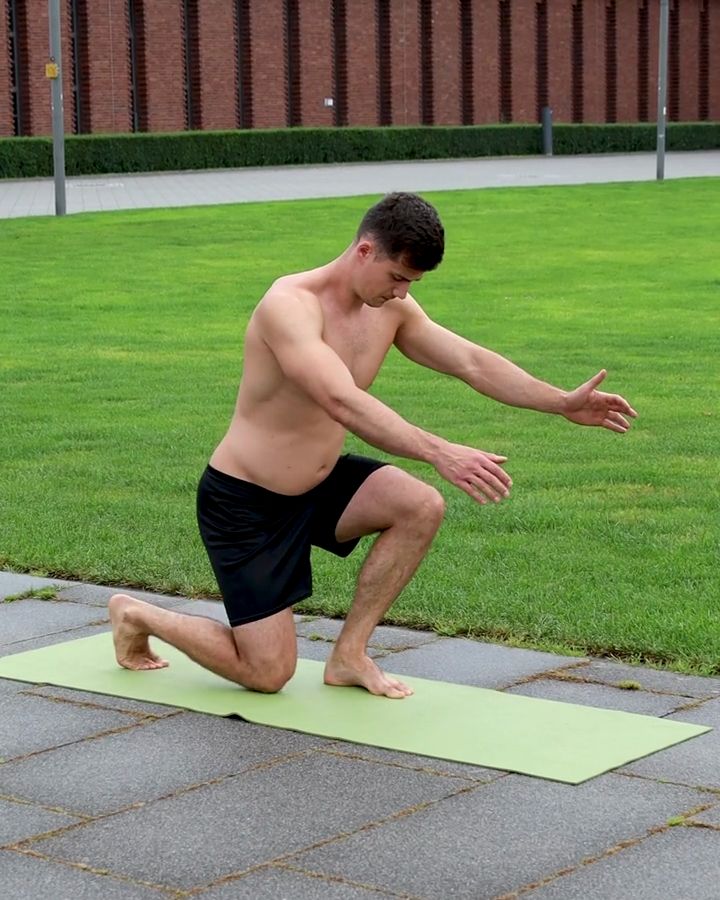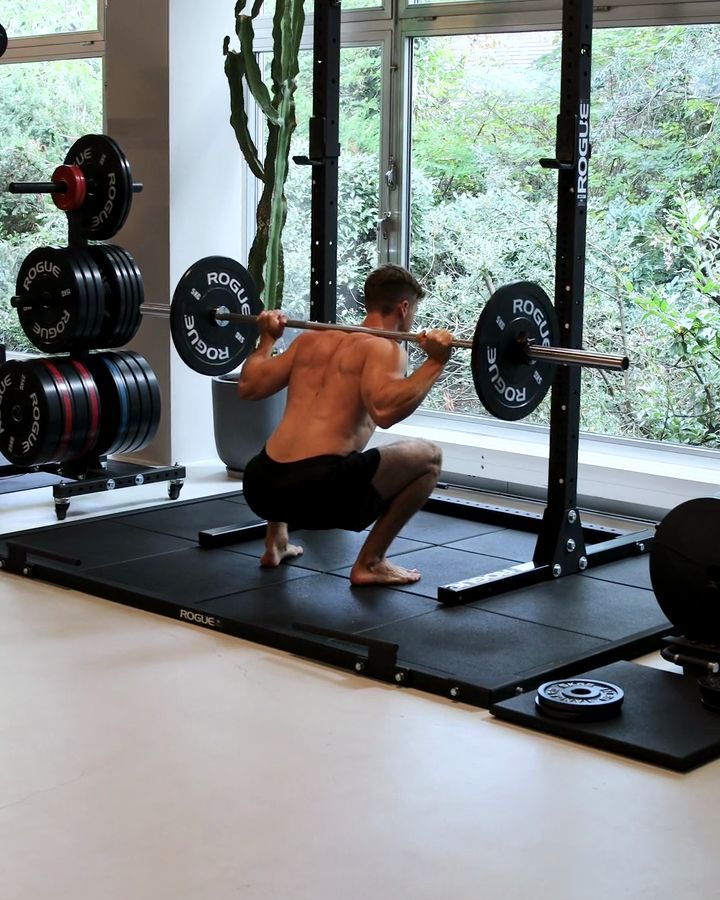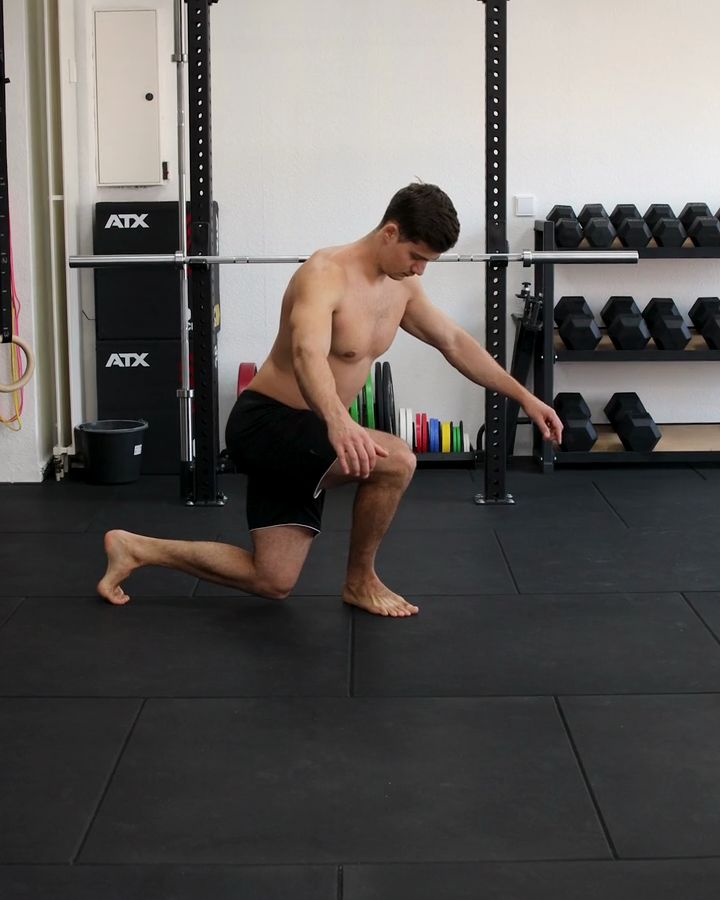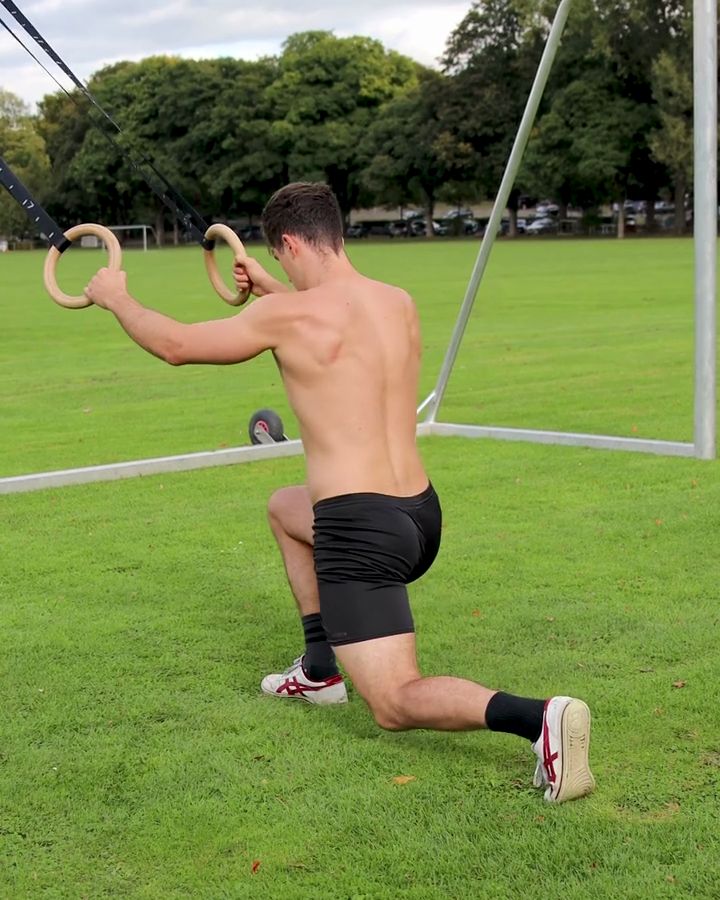Skater Squat, Shrimp Squat
The Skater Squat, also known as the Shrimp Squat, is an effective single-leg exercise for strengthening the quadriceps, glutes, and stabilizing muscles. You stand on one leg while the other is moved backward and bent. The goal is to lower the back knee toward the ground in a controlled manner without touching the foot down and then stand back up.
This exercise improves strength, balance, and coordination and is a joint-friendly alternative to Pistol Squats since it puts less stress on the knee. If you have trouble with balance, you can hold onto a wall or railing at first.
Skater Squat, Shrimp Squat - the correct execution
- Stand on your left leg
- Lead the right leg backwards
- Flex your left knee
- Touch the floor with the right knee
- Hold permanent tension in the hull
The exercise Skater Squat, Shrimp Squat is intended to be used as a hypertrophy exercise.
Which muscles are trained by Skater Squat, Shrimp Squat?






Primary trained muscles for Skater Squat, Shrimp Squat
Quadriceps - The quadriceps femoris is the large muscle at the front of your thigh. It extends your knee.
Glutes - The gluteus maximus is the large muscle in your buttocks. It is important for extending the hip, moving your leg backward, and stabilizing the hip joint.
Alternative variants of Skater Squat, Shrimp Squat:
Skater Squats Beginner Version
In the beginner version of the Skater Squat, the back foot lightly touches the ground during the movement to help with balance and support execution. This reduces the strength and stability requirements, making the exercise more accessible for beginners.
Skater Squats Beginner Version - the correct execution
- Start standing on your left leg
- Move the right leg backwards
- Bend your left knee
- Touch the floor with your right knee
- Use your front foot to push yourself back to standing position
- Hold permanent tension in the hull
Similar exercises to Skater Squat, Shrimp Squat
Barbell Back Squats
Back squats are one of the fundamental exercises in strength training. They are typically performed with a barbell, allowing for progressive overload. Back squats primarily target the thigh muscles, particularly the quadriceps and glutes. Additionally, they strengthen the core and lower back, as these muscles are crucial for stability and control during the exercise.
Back squats are among the most well-known foundational exercises in strength training, as they promote overall body strength and stability, improve functional movements in daily life, and, when combined with other strength exercises like deadlifts or lunges, provide an excellent foundation for leg training.
Curtsey Lunges
Curtsey lunges are a variation of the classic lunge, where the back leg is crossed behind the body. This movement particularly targets the outer thighs and glutes, especially the side glute muscles. The crossing motion also promotes knee joint stability and improves coordination. Compared to the normal lunge, curtsey lunges work the side muscle groups more intensively, making them an effective exercise for balanced leg training.
Assisted Lunges
Supported lunges with gymnastic rings are an excellent exercise, especially for beginners. They specifically target the leg muscles, particularly the quadriceps and glutes, while the rings provide additional stability and balance. This support reduces the risk of injury and makes it easier to perform the exercise correctly. At the same time, the movement promotes hip mobility and increases leg strength, forming the foundation for more advanced exercises.
A variation of this exercise is performing regular lunges without support or with added weight. Unlike supported lunges, these require more balance and greater control of movement.
This could also be interesting
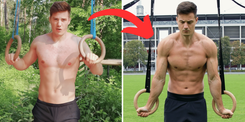
Calisthenics Body Transformation – How to Build a Strong, Lean, and Athletic Physique
Transform your body with Calisthenics! Build muscle, burn fat & achieve a shredded physique with bodyweight training. See real before & after results!
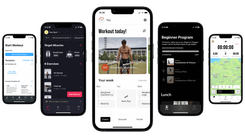
The Best Fitness Apps in 2025: Our Top 10 Recommendations
Don’t miss the best fitness apps of 2025: surprising favorites, free options, and perfect tools for your workouts. Find the ideal app today!
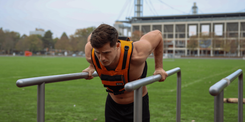
Complete Calisthenics Skills List – 40+ Exercises from Beginner to Pro
Which calisthenics skills should you learn first? And which ones will really help you progress? In this article, you’ll find a complete list of over 40 exercises – from the very basics to the toughest moves for professionals. Each exercise comes with instructions, so you can immediately integrate them into your training.
